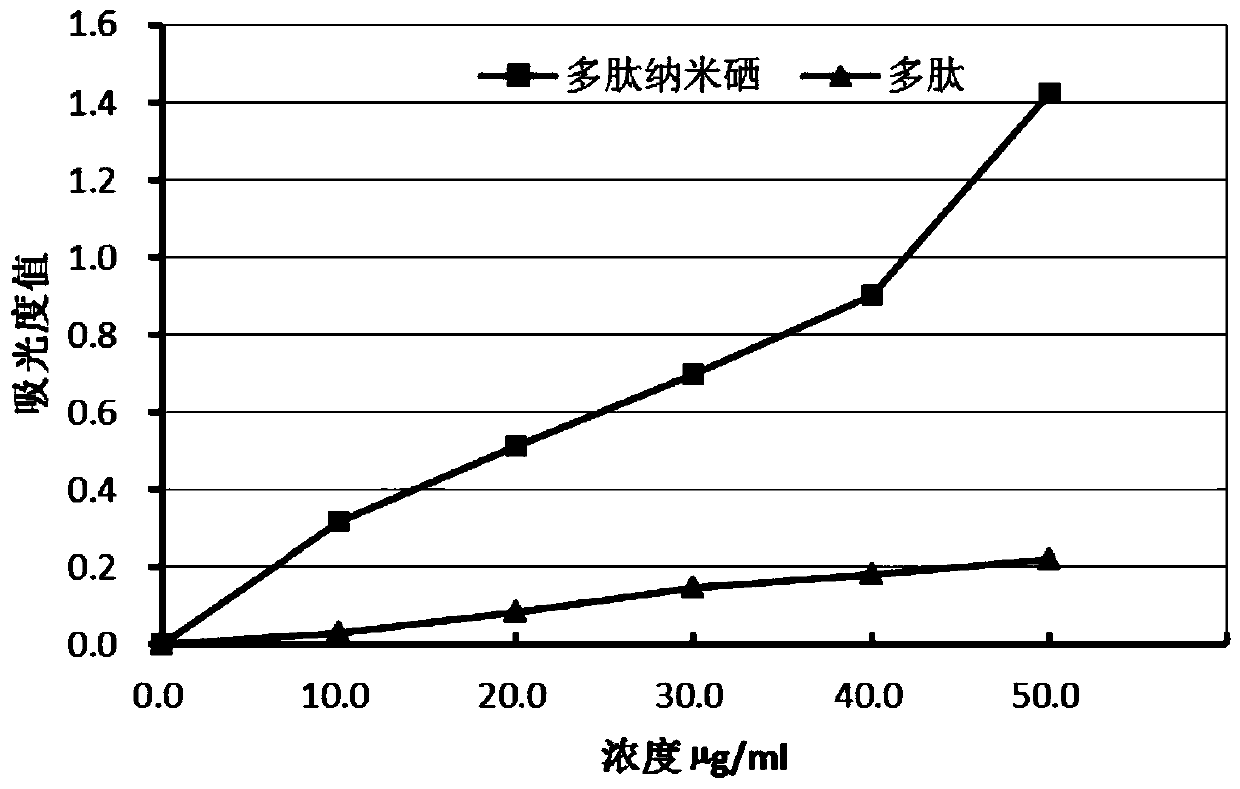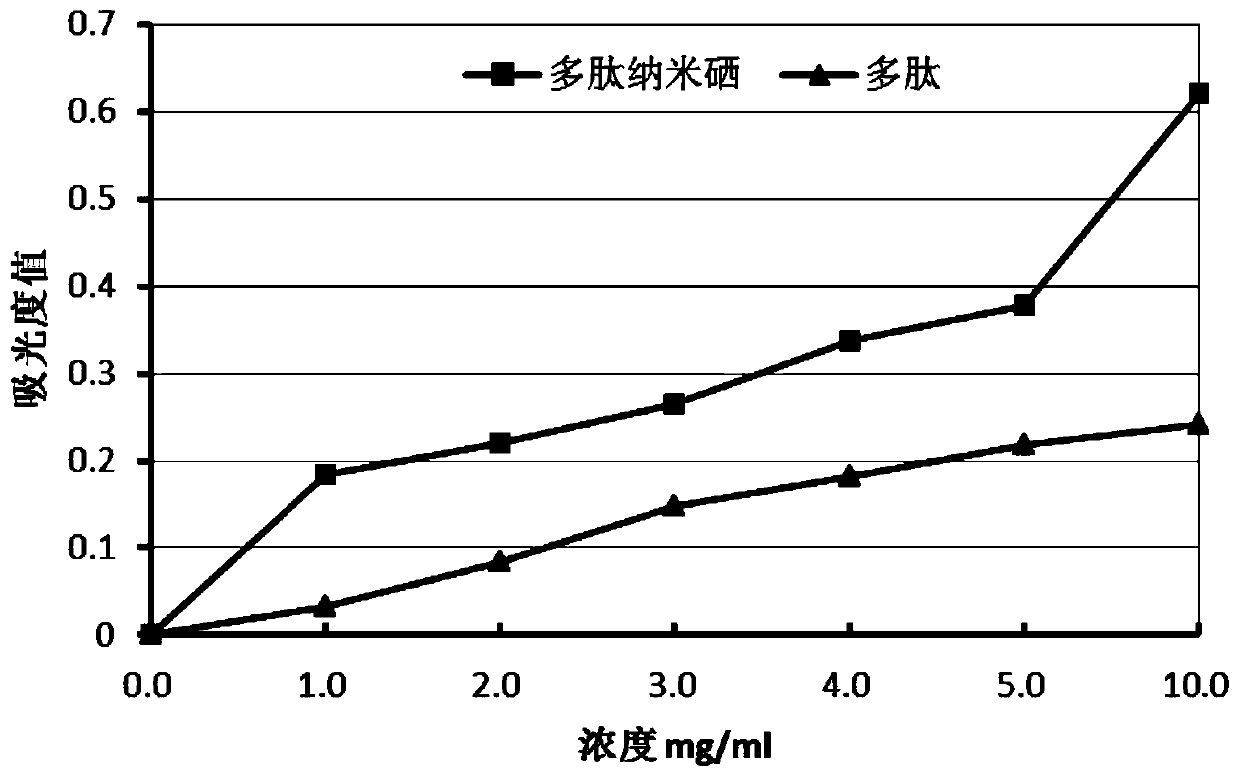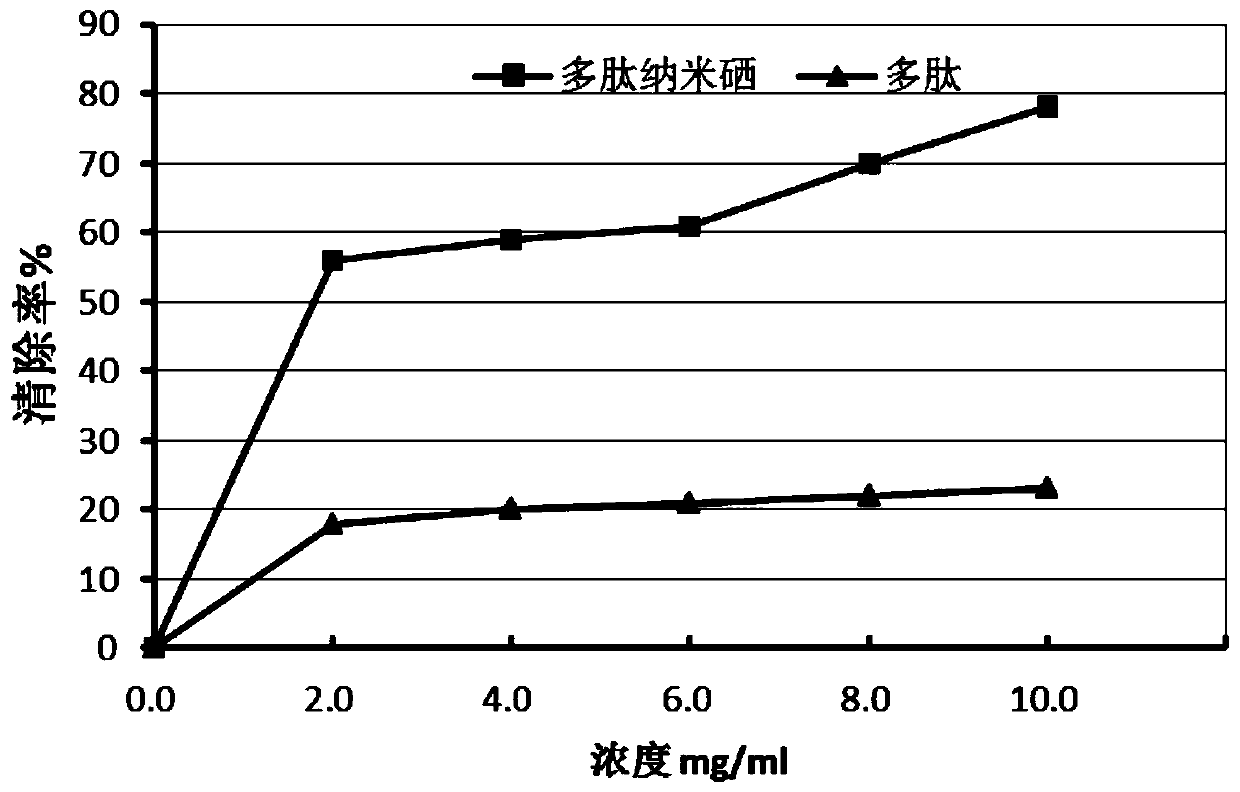Protein polypeptide based selenium nanoparticle and preparation method thereof
A technology of protein polypeptide and nano-selenium, applied in animal husbandry, additional food elements, food science, etc., can solve the problems of large particle size of nano-selenium particles, unfavorable absorption and utilization, etc., achieve rich sources, good interaction, and prevent aggregation and solidification Effect
- Summary
- Abstract
- Description
- Claims
- Application Information
AI Technical Summary
Problems solved by technology
Method used
Image
Examples
Embodiment 1
[0038] This example provides a nano-selenium particle based on a protein polypeptide, the nano-selenium particle comprising elemental selenium and a protein polypeptide that coats the elemental selenium.
[0039] In the above-mentioned nano-selenium particles, L-cysteine (Cys) as a reducing agent is a naturally occurring reducing amino acid, and the protein polypeptide as a dispersant and coating agent for elemental selenium (Se) is derived from natural plant protein , the protein polypeptide has a good interaction with elemental selenium, effectively prevents the aggregation and solidification of elemental selenium, makes the average particle size of nano-selenium particles less than 300nm, and solves the problem of relatively large particle size of nano-selenium particles in the prior art. It is beneficial to the absorption of the body, and it is beneficial to maintain the biological activity of elemental nano-selenium. The source of protein and polypeptide is rich, and it ...
Embodiment 2
[0041] This example provides the preparation method of the nano-selenium particle based on protein polypeptide, and the steps include:
[0042] S1: After the pretreated protein material is mixed with water, enzymes are added to the mixture for enzymolysis;
[0043]S2: Centrifuge the enzymatic hydrolyzate obtained in step S1 after inactivating the enzyme, and take the supernatant to obtain the protein polypeptide liquid;
[0044] S3: adjusting the concentration of the protein polypeptide liquid, adding a selenium source, adjusting the pH, adding a reducing agent, and reacting at a constant temperature to obtain the protein polypeptide-based nano selenium particles.
[0045] In S1, the pretreatment of protein raw materials refers to extruding and crushing protein raw materials. The feed-to-water ratio of protein raw material to water is 1: (1-10). The amount of enzyme added is 0.1-5.0%. The pH of the enzymolysis solution is 6.0-9.0. Before adding the enzyme, preheat the mixt...
Embodiment 3
[0050] In this example, nano-selenium particles based on peanut peptides were actually prepared, specifically:
[0051] The peanut meal left after the peanut oil is pressed is used as raw material, extruded and extruded to form a loose and porous puffed state, and then pulverized by a pulverizer to make peanut meal protein powder for later use;
[0052] Weigh peanut meal protein powder, add a certain proportion of pure water or distilled water, mix and place in a 55°C water bath to preheat for 5 minutes, adjust the pH to 7.0, add 0.1% amylase, and enzymolyze in a constant temperature oscillator at 55°C for 2 hours , then adjust the pH to 8.0, temperature to 50°C, add 0.1% Alcalase protease, continue enzymatic hydrolysis for 4 hours, then inactivate the enzyme in a water bath at 100°C for 15 minutes, centrifuge at 5000×g for 10 minutes, and the supernatant is the peanut polypeptide liquid;
[0053] Adjust the concentration of the peanut peptide solution to make the peptide con...
PUM
 Login to View More
Login to View More Abstract
Description
Claims
Application Information
 Login to View More
Login to View More - R&D
- Intellectual Property
- Life Sciences
- Materials
- Tech Scout
- Unparalleled Data Quality
- Higher Quality Content
- 60% Fewer Hallucinations
Browse by: Latest US Patents, China's latest patents, Technical Efficacy Thesaurus, Application Domain, Technology Topic, Popular Technical Reports.
© 2025 PatSnap. All rights reserved.Legal|Privacy policy|Modern Slavery Act Transparency Statement|Sitemap|About US| Contact US: help@patsnap.com



